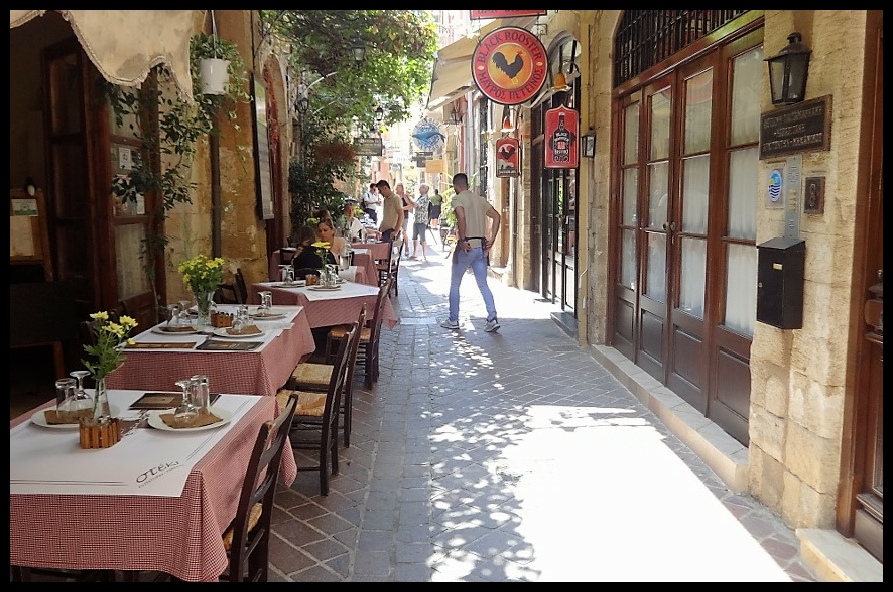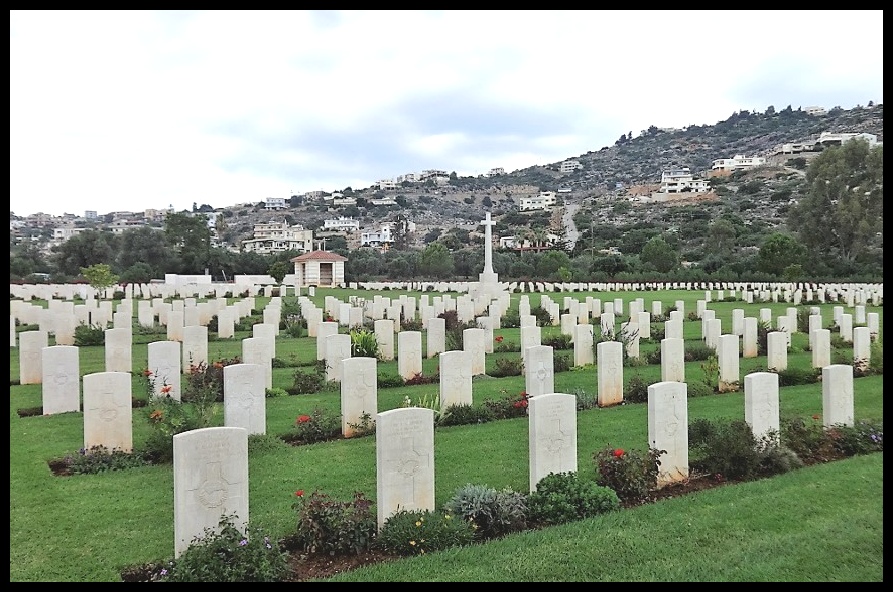CHANIA 2018

BELOW : The view from my balcony looking down on the swimming pool and surrounds, at our hotel in Chania.

BELOW : The view from my balcony looking down to the main business area and city centre of Chania.

BELOW : We have chosen this hotel because it gives great views over the city. The hotel provides a free shuttle bus service leaving from the hotel every 30 mins,and taking you directly to a designated drop off/pick up area in the centre of town. From there it’s an easy walk to the harbour and shops,cafes, restaurants and other points of interest.

BELOW : As is the case in many other towns on Crete, there is inevitably a minaret of a mosque or a church tower in the background, around the centre of the town.

BELOW : These table tennis tables were seen in the local schoolyard playground. They appeared to be basically constructed of concrete (polished on the playing area, on the top) and the net is a couple of pieces of hardy timber, permanently exposed to the elements. These are two of many at this school.

BELOW : This is the municipal market building, adjacent to where the hotel shuttle drops off. It is basically a cross shaped building, with an entry/exit door on each of the 4 sides. This is the door on the southern side. The market is about 4,000 sq metres in size, and was built between 1911 and 1913.

BELOW : Today the market has fresh produce stalls, as well as souvenirs, local products, and a number of dining and refreshment options, to allow you to make your contributions to the local economy.

BELOW : During WW II , the German forces invaded Crete and many parts of the city were bombed.

BELOW : Some of these areas have been left unchanged, and act as a reminder of the terrible destruction that some parts of the town suffered during the German occupation.

BELOW : Another section in the same area.
BELOW : The Egyptian lighthouse, at the end of the wall, in the old harbour.

BELOW : The old and the new. A view of some of today’s sea going vessels in the old harbour, and in the immediate background, buildings that were part of the Venetian Dockyards.


BELOW : A closer look at part of the wall from the photo above. It is interesting to note the many shapes and sizes of the rocks used in the construction of this wall.

BELOW : This ‘statue’ of Atlas was down around the old town harbour area. The thing was though, it was actually a ‘human statue’. Passersby were quite taken in by the statue, until it winked at them ! It was a bit of street art, and onlookers were given the opportunity to support the ongoing welfare of Atlas.


BELOW : The Cathedral of Chania (Trimartiri) is only a couple of streets back from the old port. This current building was completed in 1860, and it is built on the same site that was originally a temple, built in the 14th century.

BELOW : The inside of the church is very ornately furnished. You can see the underside of a staircase leading up to the pulpit.

BELOW : More of the fine workmanship, adding to the history, inside the church.

BELOW : Just outside the church, is an open area, and adjacent to the area are buildings used for either accommodation or shopping.

BELOW : On the opposite side of the square are also more buildings used for cafes and accommodation.

BELOW : Looking back from one of the streets closer down to the port, you can see the tower of the Cathedral, poking up towards the heavens.

BELOW : An open air restaurant, in the vicinity of the old port area. There are a few restaurants around this area which are ‘open air’, due to the fact that they are buildings which were bombed during WWII, and they have been re-

BELOW : Again, like many other towns in Crete, there are many narrow streets, winding through the central area of the old town. Lots of dining options can be found on these streets, away from the main tourist areas which are right on the harbours edge.

BELOW : The Coca-

BELOW : Today I am in the front row, on the top deck, of the ‘hop on hop off’ bus tour. We are still in the main part of town at this point.

BELOW : The building at the end of the street is in Eleftherias Square. One of the bus stop points along the tour route.

BELOW : Our main reason for joining the tour today is to visit the Souda Bay Allied War Cemetery, at Souda Bay. This photo is taken from a hilltop overlooking the bay, and you can see a Blue Star passenger ferry at the dock.


BELOW : A little further along the road the war cemetery comes into view. It is an impressive sight.

BELOW : The land was donated by the Greek people, and the ongoing maintenance costs are met by the Commonwealth War Graves Commission. The majority of graves honour people from WW1 and WWII.

BELOW : In the entry area, there is a book for visitors to record their thoughts on their visit to the cemetery.
BELOW : A close up of the stones used in the square patterned pathway in the photo above.
BELOW : A memorial to 11 members of the 1st Battalion Seaforth Highlanders (a Scottish regiment, of the British Army) who died in Crete, between March and November 1897.
BELOW : Part of the content shown on one of the plaques within the cemetery.

BELOW : This vessel is a semi-
Click here to see my YouTube clip of street traffic around this area

Click here to see my YouTube clip of the bus driver negotiating very narrow streets just prior to this area

SOUDA BAY WAR CEMETERY , CRETE
The Cemetery, within the 1941 Souda Bay defensive position, was made
after the war to contain the graves of all the Commonwealth soldiers who
died in Crete.
United Kingdom _ _ _ _ 862
Canada _ _ _ _ 5
Australia _ _ _ _ 197
New Zealand _ _ _ _ 446
South Africa _ _ _ _ 9
India _ _ _ _ 1
Others _ _ _ _ 7
TOTAL 1,527


BELOW : Looking back towards the entry area, from the row of headstones closest to the water of Souda Bay.

BELOW : Between each of the headstones there are a wide variety of plants and shrubs in place.
BELOW : The colour given to the cemetery by permanent plants definitely enhances the appearance of the whole memorial site.

BELOW : These 7 headstones, I assumed, represented the flight crew of one plane. 6 men were from the British Royal Air Force, 1 was a Polish Air Force member. Their ages were 2x23, 2x24, 1x25, 1x35 and 1 unstated. There were 2 pilots, 2 air gunners, 1 wireless operator, 1 navigator and 1 flight engineer. Seeing them grouped together was a moving sight. They all died on Friday 19th November, 1943.

BELOW : This photo was taken from near the entry, looking out towards Souda Bay.

BELOW : Along one side of the perimeter line of the cemetery were these plants.

BELOW : KNOWN UNTO GOD, is the inscription at the bottom, on all headstones which mark the grave of an unknown service person.

BELOW : Too many of the headstones show the ages of young men, who had only just begun their lives as adults, and yet they paid the ultimate sacrifice for their countries.

BELOW : This 22 year old young man, left behind a wife and daughter. What a loss was experienced by so many generations when someone who was a grandson, a son, a husband and a father, failed to return at all, from serving on the frontline.



BELOW : This is the boat we sailed on from Chania, back to Athens. An 8 hour sailing, departing from Chania port at 10.00 pm in the evening, and arriving into Piraeus at 6.00 am the following morning.
BELOW : The lights at Chania port quickly disappeared as we sailed off into the Cretan Sea.
BELOW : I was a solo traveller, but I was allocated a four berth cabin, which allowed me plenty of choices for a bed ! It was a very smooth sailing, so for a person with no sea legs, that was a big bonus.

RETURN
TO TOP
OF THIS PAGE
RETURN TO KISSAMOS




WELCOME TO MICHAEL’S WEBSITE

Click to Send
an E-
